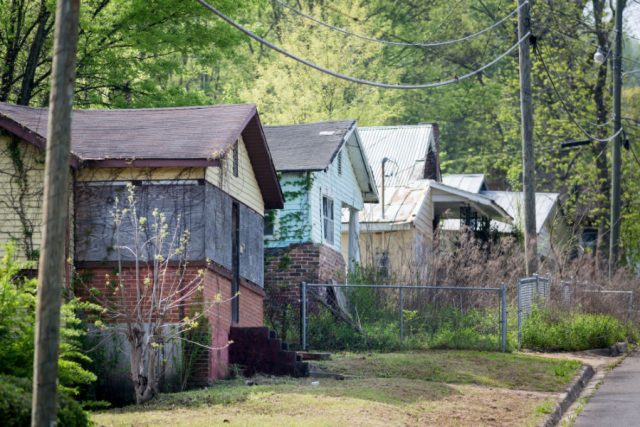By Ryan Michaels
The Birmingham Times
Much work has been done to make Birmingham more attractive through removing blighted structures and treating overgrown lots, but the “easiest piece” that needs attention is code enforcement, said Chris Hatcher, chief planner in the city of Birmingham’s Department of Community Development.
“We’ve already got laws on the books. We just need to enforce them, and that’s the first step into at least addressing some of the blighted influences that lead to that broken windows syndrome,” Hatcher said.
While the city has devoted “dedicated and hardworking” staff to code enforcement, code violators know staff “can’t be everywhere at all times,” Hatcher said. He said the mayor’s office has been working to fix this with new solutions.
“The city is positioning itself to be more innovative in our enforcement efforts. This includes investing in and deploying automated systems, an investment the Woodfin administration has already initiated,” Hatcher said.

In addition to making neighborhoods more attractive, Hatcher also said the city could get more development by changing zoning restrictions to make the process more “user-friendly.”
As an example, Hatcher pointed to the lack of medium-density housing in the city.
“Birmingham is a majority single family neighborhood city. We either have single family homes, or we have multifamily, which is large multifamily…[about] 50 units and up,” Hatcher said.
But in between single and multi-family is what city planners call “missing middle” housing, something Hatcher said doesn’t exist much outside of Birmingham’s southern neighborhoods.
“[‘Missing middle housing’ is] not high density, but it’s not low density, either. You have your duplexes all the way up to your brownstone townhome-type developments to where we can be able to build and attract more families,” Hatcher said.
Hatcher said a “character-based” code which has been in the works for years is on its “final leg towards approval.” The new zoning code would establish districts where building “missing middle housing” would be allowed to developers by right and without as many hurdles.
Also, Birmingham City Council recently passed a change to city zoning laws which allows developers to rehab historic buildings without having to go through as many bureaucratic hurdles as before.
The change allows developers to rehab without creating new parking spaces and excepts them from other requirements that did not exist when the buildings were originally constructed.
City Councilor Carol Clarke, who is project director and community development specialist for Corporate Realty, said Birmingham residents often can’t access affordable housing because the state does not fund it.

“[It is] the tools we have to induce affordable housing that are woefully lacking in Alabama, even in contrast to other states, so everybody has affordable housing shortages, but I think ours are more acute because we just don’t have a housing trust fund,” Clarke said.
While Birmingham does receive money from the U.S. Department of Housing and Urban Development for more affordable projects, that money has decreased over the years, Clarke said, and the city is lacking in nonprofit community development corporations.
In addition, the much of the quality housing stock that previously existed in Birmingham was torn down, said the councilor.
“We used to demolish structurally sound housing just because it became vacant. Now we, at least, are a lot more judicious about what we tear down, but we demolished a lot of our housing stock because it was vacant and neglected or dilapidated…,” Clarke said.
Many of the now-vacant lots from the demolitions are overgrown with noxious weeds and burden residents and the city’s pool of resources.
“Even though they’re privately owned, people look to the city to fix those [lots], and now the population of them is so big [where] there’s no way the city can service them to a reasonable service level, and there’s no return on the money. None. It’s just setting money on fire,” Clarke said.
Hatcher added that many of the neglected properties are due to complications like “heir properties”, when a family member dies without a will, and their children all receive a stake in the property, according to Hatcher. Often, properties are abandoned because none of the heirs solely owns or lives in the home.




